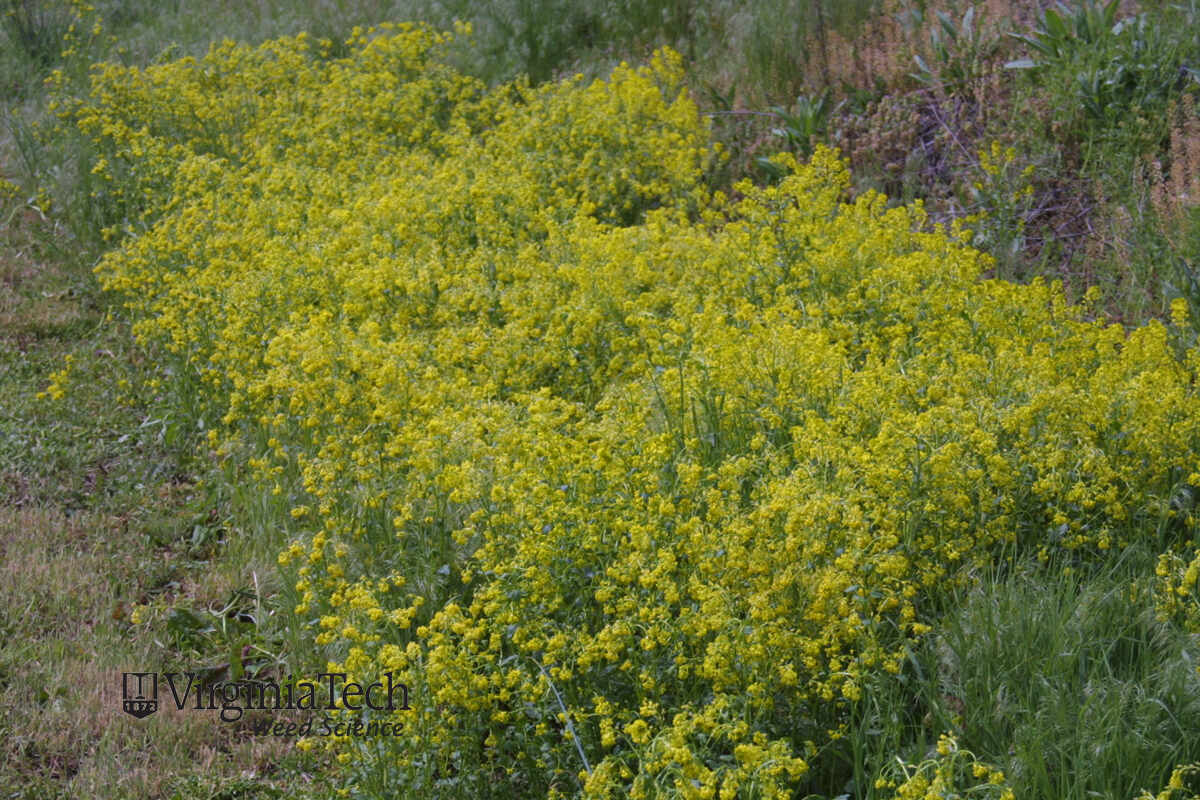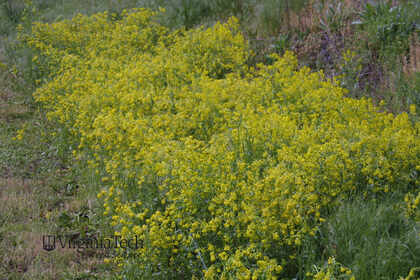garden yellowrocket
Family
BrassicaceaeScientific Name
Barbarea vulgarisSynonyms (former Scientific Names):
Barbarea vulgaris var. arcuata
Barbarea vulgaris var. sylvestris
Barbarea vulgaris var. brachycarpa
Campe barbarea
Barbarea stricta
Barbarea vulgaris var. longisiliquosa
Campe stricta
Habit
Some plants may complete the entire life cycle in a single season and others my live on as weak perennials, however, most plants are biennials. Plants reproduce only by seed. Seeds germinate mainly in fall but also in spring and form a rosette of foliage in the first year, emerge from a taproot in the second year, produce flowers, and perish. Flowers from mid-May to early July and, sometimes again, briefly in late autumn.
Leaves
Young plants produce a rosette of smooth, shiny, dark green leaves during the first year. Initial leaves are round but older leaves are deeply dissected but have rounded tips. Throughout the winter, leaves stay green or turn slightly purplish by spring. The other plant parts and leaves are completely hairless. On the flowering stalk leaves are arranged alternate, deeply dissected, and have basal lobes that clasp the stem. Lower leaves have long stalks but leaves on the flower stem have short stalks.
Identifying Characteristics
Dissected leaves always have rounded tips and leaves that are shiny. Leaves on flowering stalk, clasp the stem with basal lobes and have showy yellow flowers. Stalks may be 50 to 100 cm tall.
Flower Seed Head
Flowers are four parted and typical of the mustard family. Flowers are typically golden-yellow and small, 10 - 16 mm across. The seedpods and their stalks are either nearly erect and overlapping one another forming a dense raceme (B. vulgaris var. vulgaris) or the stalks spread with the seedpods standing outwards or curving upwards and usually not over-lapping one another, thus forming an open raceme (B. vulgaris var. aracuata (Opiz. Fries). Pods are 1.5 to 3 cm long and borne on short stalks (3 to 6 mm). Each seed pod has a slender, seedless beak that is about 2 to 3 mm long.
Seed Fruit
Seeds are egg-shaped, about 1 to 1.5 mm long, and metallic grayish-brown.
Where Found
Yellow rocket is common in meadows, pastures, waste areas, roadsides, railways and along watercourses, being especially common in moist rich soil. Yellow rocket can be a problem weed in fine turfgrass after an initial turfgrass seeding event. However, yellow rocket seedlings do not compete well with established turfgrass unless problems with excessive moisture thin the turf.
Growth Habit
upright and nonwoody
Thorns or Spines
not present
Approximate Flower Diameter
Varies:
pencil,
dime
Dominant Flower Color
yellow
Flower Symmetry
radial symmetery
Leaf Hairs
no hairs
Leaf Shape
oval
Leaf Arrangement
Varies:
alternate,
rosette
Leaf Margin
Varies:
entire,
wavy
Leaf Structure
Varies:
pinnate,
simple
Leaf Stalk
shorter than leaf
Stem Hairs
no hairs
Stem Cross Section
round or oval
Milky Sap
not present
Root Structure
Varies:
fibrous,
taproot
Life Cycle
biennial
Ochrea
not present
Plant Type
Herb

















